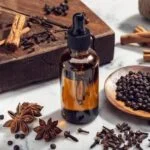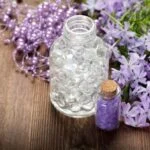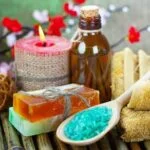Are you curious about how to aromatherapy massage but not sure where to start? Aromatherapy massage is a popular holistic treatment that combines the benefits of essential oils with the therapeutic effects of massage. In this article, we will guide you through the basics of aromatherapy massage, including its definition and how it works, so you can enjoy all the physical and mental advantages it offers.
Aromatherapy massage is a gentle yet effective way to promote relaxation, reduce stress, and enhance overall well-being. By incorporating the use of essential oils into the massage session, aromatherapy enhances the healing power of touch through the sense of smell. The combination of soothing touch and aromatic scents helps to create a harmonious balance between mind, body, and spirit.
In this comprehensive guide, we will delve into the benefits of aromatherapy massage, provide tips on choosing the right essential oils for your needs, offer step-by-step instructions on performing an aromatherapy massage, discuss important safety precautions to consider, and even share DIY recipes for creating customized massage oils.
Whether you are a beginner looking to incorporate aromatherapy massage into your self-care routine or someone interested in expanding their knowledge on holistic wellness practices, this article has something for everyone.
The Benefits of Aromatherapy Massage
Aromatherapy massage is a popular holistic treatment that combines the benefits of massage therapy with the therapeutic properties of essential oils. The practice involves using various essential oils to enhance the overall experience and promote relaxation, stress relief, and physical well-being. In this section, we will explore the numerous benefits of aromatherapy massage, including its impact on both the body and mind.
Physical Benefits
One of the key physical advantages of aromatherapy massage is its ability to promote relaxation and help reduce muscle tension. When combined with massage techniques, essential oils such as lavender, chamomile, and eucalyptus can soothe sore muscles and improve circulation. Additionally, certain essential oils have anti-inflammatory properties that can provide relief for conditions such as arthritis or joint pain. Aromatherapy massage also has been shown to improve sleep quality and boost overall energy levels.
Mental Benefits
In addition to its physical advantages, aromatherapy massage offers several mental health benefits. The use of essential oils can have a calming effect on the mind, reducing stress, anxiety, and depression. Aromatherapy massage has also been linked to improved mental clarity and focus. Certain scents like citrus or peppermint can invigorate the senses and improve mood while promoting a sense of overall well-being.
Overall Well-Being
Beyond just physical and mental benefits, aromatherapy massage contributes to an individual’s overall sense of well-being. By combining touch with the therapeutic scents of essential oils, recipients can experience a heightened state of relaxation that positively impacts their emotional state.
This holistic approach to self-care allows individuals to unwind and de-stress on multiple levels simultaneously. Whether you’re experiencing muscle tension or simply looking for a moment of tranquility in your day-to-day life, aromatherapy massage has something to offer everyone.
Essential Oils 101
Aromatherapy massage is a type of massage therapy that incorporates the use of essential oils to provide added benefits during the massage. Essential oils are highly concentrated, aromatic plant extracts that have been used for centuries for their therapeutic properties. When used in aromatherapy massage, these oils can help to promote relaxation, alleviate stress, and enhance overall well-being.
Choosing the right essential oils for aromatherapy massage is an essential part of the process. It’s important to select oils that not only smell pleasant to you but also offer specific therapeutic benefits.
For example, lavender essential oil is known for its calming and relaxing properties, making it an excellent choice for reducing stress and promoting sleep. On the other hand, eucalyptus oil is often used for its invigorating and decongestant effects, making it a good option for those looking for relief from respiratory issues.
When selecting essential oils for aromatherapy massage, consider your specific needs and desired effects. Whether you’re looking to uplift your mood, relieve muscle tension, or improve mental clarity, there are a variety of essential oils to choose from that can cater to your individual preferences and wellness goals.
It’s also important to note that some essential oils may cause skin irritation or allergic reactions in some individuals. It’s recommended to perform a patch test before using a new oil topically or consult with a qualified aromatherapist or healthcare provider if you have any concerns about using essential oils during a massage.
| Essential Oil | Therapeutic Benefits |
|---|---|
| Lavender | Calming and relaxing; reduces stress and promotes sleep |
| Eucalyptus | Invigorating and decongestant; relieves respiratory issues |
| Peppermint | Refreshing and uplifting; alleviates headaches and muscle tension |
| Bergamot | Mood-boosting and stress-relieving; improves mental clarity |
Setting the Mood
Creating the perfect atmosphere is essential to fully enjoy the benefits of aromatherapy massage. Here are some tips on how to set the mood for a relaxing and rejuvenating experience:
1. Choose the Right Location: Find a quiet and comfortable space where you won’t be disturbed during the massage. This could be a dedicated massage area, your bedroom, or even a cozy corner in your living room. Make sure the room is warm and well-ventilated.
2. Lighting: Dim the lights or use candles to create a calming ambiance. Natural light or soft, warm artificial lighting can also contribute to a relaxing environment.
3. Aromatherapy Diffuser: Use an essential oil diffuser to fill the air with soothing scents that will enhance the massage experience. Lavender, chamomile, and eucalyptus are popular choices for relaxation and stress relief.
4. Relaxing Music: Choose gentle, instrumental music or nature sounds to promote relaxation and calmness during the massage. Avoid anything too upbeat or distracting.
5. Comfortable Setting: Use clean linens, plush towels, and comfortable pillows to ensure that both the giver and receiver of the massage are comfortable throughout the session.
By paying attention to these details, you can create a serene environment that will enhance the effects of aromatherapy massage, promoting relaxation and overall wellness.
Techniques for Aromatherapy Massage
Aromatherapy massage is a gentle therapeutic technique that combines the benefits of massage and the use of essential oils. When done correctly, it can promote relaxation, reduce stress, and alleviate muscle tension. Learning how to aromatherapy massage can be a valuable skill for self-care or for providing comfort to others.
Preparing for the Massage
Before starting an aromatherapy massage, it’s important to create a peaceful environment. Choose a warm, quiet space and dim the lights. Play soft music and ensure the room is at a comfortable temperature. Additionally, select your preferred essential oil or blend and dilute it with a carrier oil such as almond oil or coconut oil.
Performing the Massage
Begin by applying a small amount of your prepared oil onto your palms, then rub them together to warm the oil before gently massaging it onto the skin. Use long, smooth strokes along the muscles, applying light to moderate pressure. Pay attention to any areas of tension and focus on kneading those specific spots. Be aware of your partner’s comfort level and adjust pressure as needed.
Adding Aromatherapy Elements
As you perform the massage, engage all senses by enhancing the experience with aromatherapy elements. You can enhance relaxation with candles and soothing scents such as lavender or chamomile. Encourage deep breathing to truly benefit from both the massage itself and the therapeutic effects of aromatherapy.
Learning how to perform an aromatherapy massage takes practice, but with patience and attentiveness, you can provide yourself or others with a nurturing experience that promotes both physical and mental well-being.
Safety Tips
When practicing aromatherapy massage, it’s important to take certain safety precautions to ensure a positive and safe experience for both the giver and receiver. Here are some important safety tips to keep in mind:
1. Patch test the essential oils: Before using any essential oil for massage, it’s crucial to perform a patch test on a small area of the skin to check for any adverse reactions or allergies. This can help prevent any potential skin irritation or allergic reactions during the massage.
2. Dilute essential oils properly: Essential oils are highly concentrated and should never be applied directly to the skin without proper dilution. Always mix essential oils with a carrier oil, such as almond oil or coconut oil, before applying them to the skin during an aromatherapy massage.
3. Mind sensitivities and allergies: Be mindful of any sensitivities or allergies that either you or the recipient may have. Some essential oils can trigger allergic reactions in certain individuals, so it’s important to inquire about any existing allergies before choosing which oils to use for the massage.
4. Avoid sensitive areas: When giving an aromatherapy massage, be cautious when applying pressure or massaging sensitive areas of the body, such as the face, neck, abdomen, and inner thighs. It’s best to stick to larger muscle groups and avoid delicate areas where essential oils may cause discomfort.
5. Seek professional guidance: If you’re new to aromatherapy massage or have any concerns about using essential oils safely, consider seeking advice from a certified aromatherapist or professional massage therapist who can provide guidance on how to incorporate aromatherapy into your massage practice safely.
By following these safety tips and being mindful of any potential risks associated with aromatherapy massage, you can create a safe and enjoyable experience for both yourself and anyone receiving the treatment. Aromatherapy massages are not only relaxing but can also offer therapeutic benefits when practiced responsibly and safely.
DIY Aromatherapy Massage Oils
Aromatherapy massage oils are a great way to enhance the benefits of a massage with the added therapeutic effects of essential oils. Making your own customized massage oils allows you to tailor the fragrance and properties of the oil to your specific needs. Whether you’re looking for relaxation, rejuvenation, or relief from muscle tension, creating your own aromatherapy massage oil can be a fun and rewarding experience.
To start, it’s important to choose the right carrier oil for your massage blend. Some popular carrier oils include sweet almond oil, grapeseed oil, and coconut oil.
These oils have their own unique properties and textures, so it’s important to consider what will best suit your skin type and desired outcome. For example, sweet almond oil is great for all skin types and is easily absorbed into the skin, while coconut oil has a soothing effect and is perfect for dry or sensitive skin.
Once you’ve chosen your carrier oil, it’s time to select the essential oils that will complement it. Lavender, chamomile, and bergamot are commonly used for relaxation and stress relief, while peppermint, eucalyptus, and rosemary are great for promoting energy and relieving muscle pain.
It’s important to dilute essential oils properly in the carrier oil to avoid any adverse reactions on the skin. A general rule of thumb is to use about 12 drops of essential oil per ounce of carrier oil.
| Carrier Oils | Popular Essential Oils |
|---|---|
| Sweet Almond Oil | Lavender |
| Grapeseed Oil | Chamomile |
| Coconut Oil | Bergamot |
Conclusion
In conclusion, aromatherapy massage is a wonderful way to promote relaxation, reduce stress, and improve overall well-being. By combining the benefits of essential oils with therapeutic massage techniques, individuals can experience both physical and mental relief. The use of specific essential oils such as lavender for relaxation, peppermint for invigoration, or eucalyptus for respiratory support adds another layer of healing to the massage experience.
When incorporating aromatherapy massage into your self-care routine, it’s important to remember that safety is paramount. Always properly dilute essential oils before applying them to the skin, and perform a patch test if you have sensitive skin or allergies. Additionally, creating a calming ambiance through soft lighting, calming music, and comfortable surroundings can greatly enhance the overall experience.
For those interested in learning how to aromatherapy massage at home, it’s essential to understand the proper techniques for application. Combining gentle strokes with the aromatic benefits of essential oils can maximize the therapeutic effects of the massage.
It’s also beneficial to explore and experiment with different combinations of essential oils to find what works best for individual needs and preferences. Overall, by taking the time to create a relaxing atmosphere and mastering proper technique, anyone can easily incorporate the benefits of aromatherapy massage into their self-care routine.
Frequently Asked Questions
How Do You Do an Aromatherapy Massage?
An aromatherapy massage is done by combining massage techniques with the use of essential oils. The massage therapist will apply the diluted essential oils to the skin and then proceed with the massage, focusing on relaxation and stress relief.
What Happens in a Full Body Aromatherapy Massage?
In a full body aromatherapy massage, the therapist will work on massaging all areas of the body using a combination of gentle and firm strokes. The use of essential oils not only enhances the massage experience but also helps in promoting relaxation, reducing stress, and improving overall well-being.
What Oils Are Used for Aromatherapy Massage?
Various essential oils can be used for aromatherapy massages, depending on the desired effect. Some popular choices include lavender for relaxation, peppermint for invigoration, eucalyptus for respiratory support, and chamomile for calming properties. It’s important to choose high-quality, pure essential oils to ensure safety and effectiveness during the massage.

Are you looking for a natural way to improve your health and wellbeing?
If so, aromatherapy may be the answer for you.






